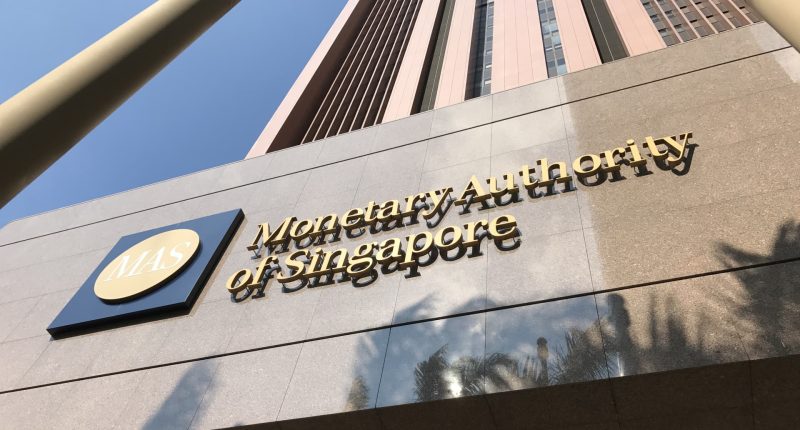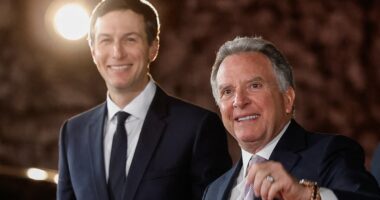Share this @internewscast.com
View of MAS building, Singapore
Lee Yen Nee
Singapore on Monday eased its monetary policy for the second straight time, as the city-state posted a lower-than-expected GDP growth of 3.8% for the first quarter, according to advance estimates.
The Monetary Authority of Singapore had eased its policy stance in its January meeting too, loosening policy for the first time since 2020.
The MAS said Monday it would reduce the rate of appreciation of its policy band known as the Singapore dollar nominal effective exchange rate, or S$NEER.
“MAS will continue with the policy of a modest and gradual appreciation of the S$NEER policy band,” it said.
The central bank strengthens or weakens its currency against a basket of its main trading partners, thus effectively setting the S$NEER. The exact exchange rate is not set, rather, the S$NEER can move within the set policy band, the precise levels of which are not disclosed.
Singapore’s year-on-year quarterly GDP growth missed expectations of 4.3% from economists polled by Reuters, and was lower than the 5% expansion seen in the last quarter of 2024.
The country’s Ministry of Trade and Industry downgraded its GDP forecast to 0%-2% for 2025, down from its previous outlook of 1%-3% — MAS also projected GDP growth of 0%-2% for 2025.
In a release, MTI said the growth slowdown was due to declines in manufacturing, as well as some services sectors such as finance and insurance.
The ministry said that due to the sweeping tariffs imposed by the U.S., as well as the U.S.-China trade war, the growth outlook for both the U.S. and China will deteriorate.
For Singapore, MTI said that its external demand outlook has “weakened significantly.” It highlighted that the manufacturing sector is likely to be negatively affected by weaker global demand, and services such as finance and insurance could see a slowdown.
This is due to risk-off sentiments that will adversely affect the net fees and commission incomes of the banking, fund management, forex and security dealing segments.
Manufacturing, as well as the finance and insurance sectors are some of the largest contributors to Singapore’s economy, making up about 17% and 14% of its GDP, respectively.
In a ministerial statement earlier this month on U.S. tariffs and their implications, Singapore Prime Minister Lawrence Wong said that he had “no doubt” that Singapore’s growth will be significantly impacted. “Singapore may or may not go into recession this year.”
MAS lowered headline inflation for 2025 was lowered to an average of 0.5%-1.5%, down from its previous projection of 1.5%-2.5%.
The core inflation forecast — which strips out prices of accommodation and private transport — also was lowered to 0.5%-1.5%, down from the 1%-2% forecasted after the January meeting.








